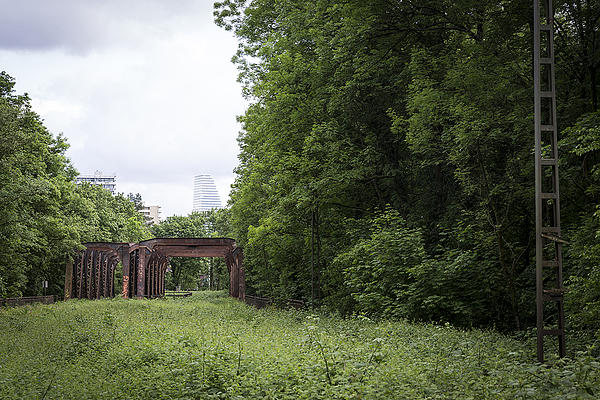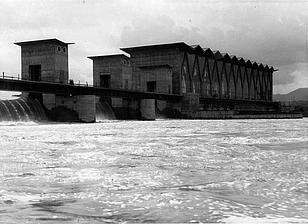Constructed Nature
Constructed Nature: Lange Erlen, Basel

Is nature today entirely constructed and managed or is there simply no nature left?
Either way, the distinction between nature and the artificial, nature and culture, or nature and architecture, is no longer possible since we became modern.
We will seek new methods to describe and design landscape and architecture as one environment in a unique collaboration with Professors Jacques Herzog and Pierre de Meuron. Taking the Lange Erlen area of Basel as a case study, we shall contribute to a long-term research project on the spatial and territorial future in Switzerland. While Lange Erlen’s unique composition of mechanical, biological and human systems has created a very specific landscape, its potential to be a new parkland or garden city is relevant to all post-industrial western territories.
Lange Erlen was constructed to store water for the city of Basel from Rhein in flood planes and reservoirs. Water management structures, transport infrastructure and agriculture have been added to create a mature landscape of layered points, lines and surfaces.
Points and lines and space
A corn of grain repeated becomes a field and blades of grass become meadows. Like nature, architecture is simply the accumulation, repetition and diversification of very small material actions; construction is the DNA of architecture and we shall focus on construction (instead of urban planning) to develop architectural proposals.
Industry and infrastructure add large singular structures. It is the nature of landscapes to be constructed of large and small artefacts composed in a manner to bring a proper productive and experiential capacity for human existence.

The relationship between the small and the large should not be confused with hierarchy of political status, architectural meaning or indeed of beauty. A gate can charge landscape with as much spatial and political energy as a tower or power station. The art of architecture may quite simply be the design and arrangement of these parts to create the most beautiful and civilized environments to sustain productive and social life together.
Atlas
We will consider the future of Lange Erlen through the Atlas; a territorial survey at all scales. With feet on the ground, we shall produce a survey of what we find without discrimination. The territorial scale will be inscribed in the micro and the macro will show the patterns of the small. Into the Atlas, we will ask you to propose a new architecture, a new future for the area. In the first semester, we shall focus on a point, a singular architectural structure with the presence and purpose to affect. In the second semester, we shall extend the point in lines, into architectural interventions with greater capacity to provide new settlements and uses but also to provide new spatial, social and environmental structure to the territory.
Garden
The relationship between architecture and landscape explored in Lange Erlen will be amplified at full in the garden at ETH. We shall continue our work in the garden during the autumn semester with a construction project to add social spaces to what was has been started in the past two years. In spring we shall turn to planting. Our intention is to work as architects but with the care of a gardener.